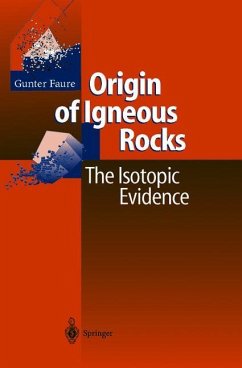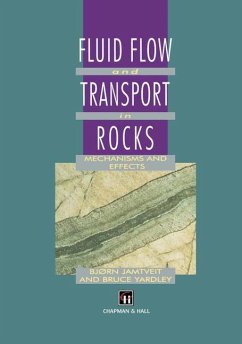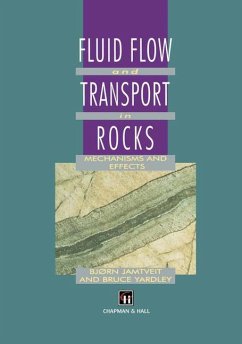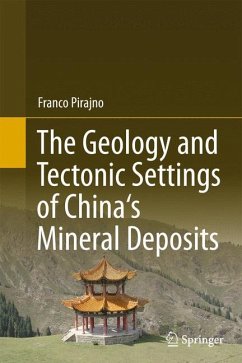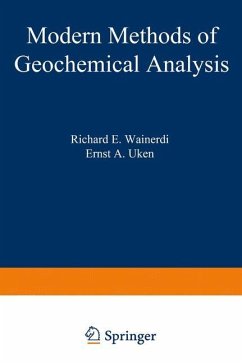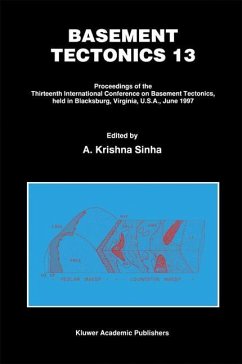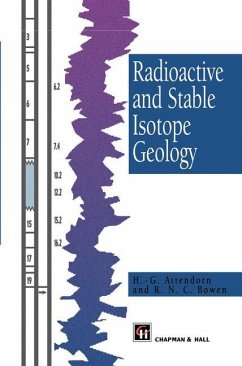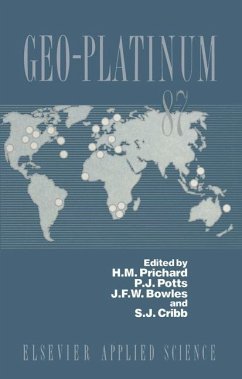
Igneous Petrogenesis A Global Tectonic Approach
Versandkostenfrei!
Versandfertig in 1-2 Wochen
77,99 €
inkl. MwSt.

PAYBACK Punkte
39 °P sammeln!
As a major text in igneous petrology, this innovative book offers a much-needed, radically different approach to the study of igneous rocks. Bridging a long-recognized gap in the literature by providing petrogenic models for magmatismin terms of global tectonic processes, it encompasses geophysics and geochemistry in a comprehensive treatment of the subject.Most textbooks in igneous petrology have intended to avoid discussion of potentially controversial petrogenetic models. However, this is precisely the sort of information senior students of igneous petrology require. Dr Wilson has drawn on ...
As a major text in igneous petrology, this innovative book offers a much-needed, radically different approach to the study of igneous rocks. Bridging a long-recognized gap in the literature by providing petrogenic models for magmatismin terms of global tectonic processes, it encompasses geophysics and geochemistry in a comprehensive treatment of the subject.
Most textbooks in igneous petrology have intended to avoid discussion of potentially controversial petrogenetic models. However, this is precisely the sort of information senior students of igneous petrology require. Dr Wilson has drawn on 15 years of research and 10 years of teaching experience in writing an account of what is now a well established understanding of the processes involved in environments of magma generation. She provides full discussions of the major-element, trace-element, and radiogenic isotope characteristics of magmas generated in different tectonic settings and she deals with the information derived from such data concerning magma source regions and their ascent trough the Earth's lithosphere. Additionally each chapter contains a summary of geophysical data relating to crustal and mantle structure and the location of magma reservoirs.
The modular format of the book will facilitate its use by all students, researchers and professionals with an interest in igneous petrology. A basic knowledge of geochemistry, mineralogy, phase diagrams, regional geology and global tectonics is assumed, but such advanced topics as trace element and isotope geochemistry can be omitted initially if the reader's background is inappropriate. The text is profusely illustrated and the bibliography contains over 1000 carefully selected references.
Marge Wilson graduated in geology at the University of Oxford. She then spent a year at the University of California, Berkeley, and subsequently studied the petrogenesis of nepheline syenites from the Gardar province of Greenland, leading to a PhD from the University of Leeds. Her research has focused on island-arc, oceanic-island and intra-continental plate tectonic settings.
Most textbooks in igneous petrology have intended to avoid discussion of potentially controversial petrogenetic models. However, this is precisely the sort of information senior students of igneous petrology require. Dr Wilson has drawn on 15 years of research and 10 years of teaching experience in writing an account of what is now a well established understanding of the processes involved in environments of magma generation. She provides full discussions of the major-element, trace-element, and radiogenic isotope characteristics of magmas generated in different tectonic settings and she deals with the information derived from such data concerning magma source regions and their ascent trough the Earth's lithosphere. Additionally each chapter contains a summary of geophysical data relating to crustal and mantle structure and the location of magma reservoirs.
The modular format of the book will facilitate its use by all students, researchers and professionals with an interest in igneous petrology. A basic knowledge of geochemistry, mineralogy, phase diagrams, regional geology and global tectonics is assumed, but such advanced topics as trace element and isotope geochemistry can be omitted initially if the reader's background is inappropriate. The text is profusely illustrated and the bibliography contains over 1000 carefully selected references.
Marge Wilson graduated in geology at the University of Oxford. She then spent a year at the University of California, Berkeley, and subsequently studied the petrogenesis of nepheline syenites from the Gardar province of Greenland, leading to a PhD from the University of Leeds. Her research has focused on island-arc, oceanic-island and intra-continental plate tectonic settings.





